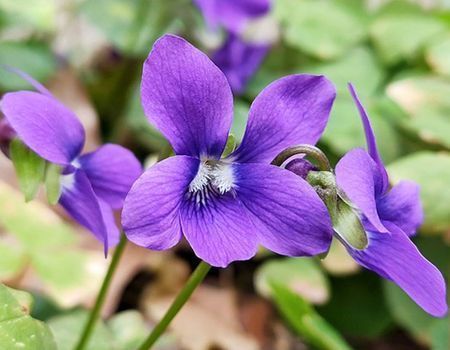Violet

Scientific Name: Viola spp.
Common Name: Common blue violet, wooly blue violet, common meadow violet, purple violet, woolly blue violet, hooded violet, birdfoot violet, downy yellow violet, marsh blue violet, pansy, yellow violet, johnny jump up, and wood violet
Plant Family: Violaceae (Violet family)
Etymology: “Viola” refers to the color violet.
Parts Used: flowers, leaves, roots
Season: spring, summer
Indigenous Uses
The leaves, stems, and flowers of violets were used widely as food, eaten raw or cooked. As a medicine, all parts of the plant were used internally and externally to treat heart problems, joint pain, diarrhea, fever, gas, indigestion, bronchitis, poor circulation, colds, coughs, dysentery, bladder pain, and sore throat. Range of applications included binding the leaves on head for headache; using a poultice of crushed root for boils; spraying tea up nose for catarrh; and soaking corn in root tea before planting to keep off insects.
Edible Parts
Enjoy raw flowers and tender leaves in wild salads. Used cooked leaves as a thickening agent in soups. Older leaves can be used for infusions or crumpled into stews. Preserve leaves by drying in bundles, hung upside down away from direct light or heat. Transfer to an airtight jar for storage.
Contemporary Medicinal Uses
All parts of the violet can be used fresh or dried. Make a tea by boiling in a teaspoonful of herb in a cup of water for fifteen minutes. Apply the tea directly to the skin as a compress or a wash to resolve skin disorders, including rashes, cradle cap, and hives. Make a healing poultice by bruising leaves and applying cold. Violet can also be used to infuse herbal oils for moisturizing, toning, and healing the skin. There are no contraindications known; it is safe for general use.
Caution: African violets are not related to the edible species — do not consume.

This project was made possible by a grant from Maryland Humanities, with funding received from the Maryland Historical Trust in the Maryland Department of Planning. Maryland Humanities’ Grants Program is also supported by the National Endowment for the Humanities and private funders. Any views, findings, conclusions, or recommendations expressed on this website do not necessarily represent those of Maryland Humanities, Maryland Historical Trust, Maryland Department of Planning, or National Endowment for the Humanities.
Header image credit

